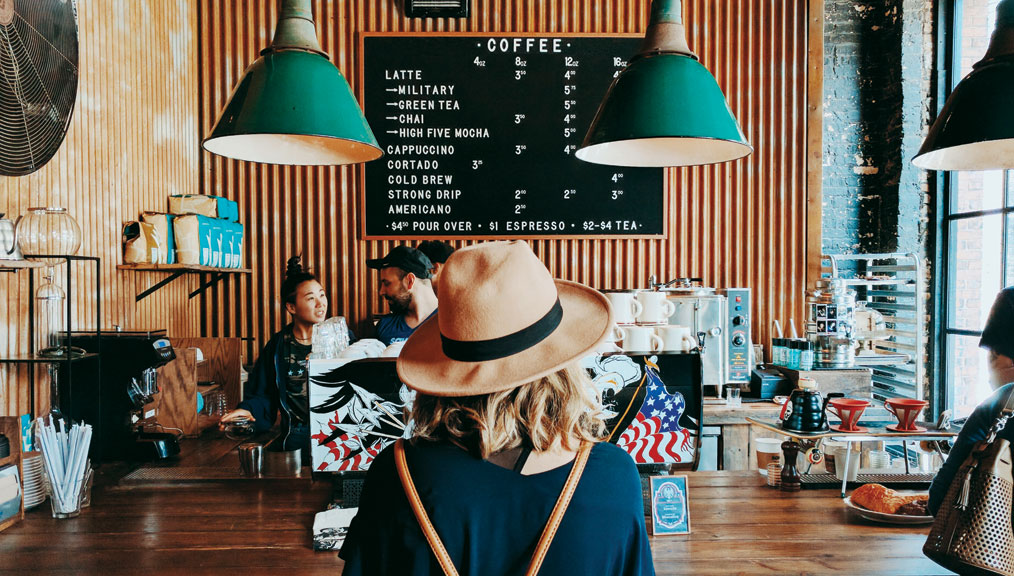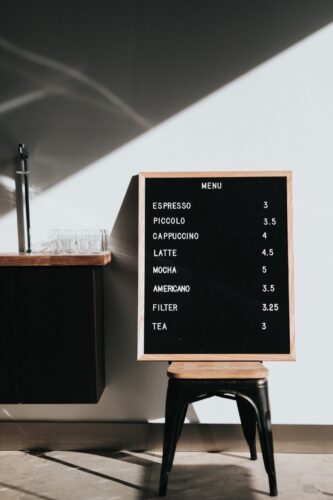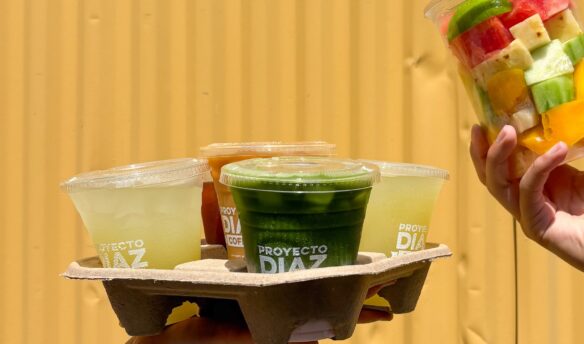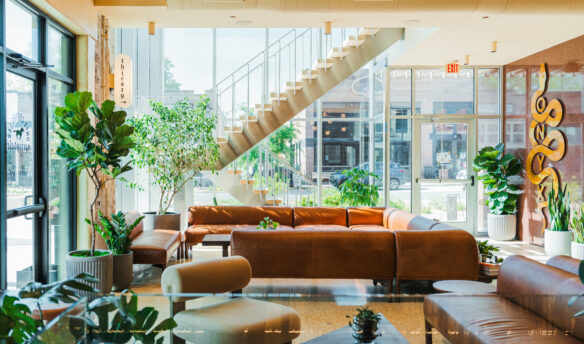Barista: Hi! How are you today?
Guest: Oh, pretty good!
Barista: What are you in the mood for?
Guest: I’m not sure. What do you recommend?
A version of this interaction plays out daily in coffee shops across the land—and it’s a golden opportunity to engage with guests. Whether dealing with a brand new or a returning customer, this initial exchange is a chance to either draw the person in or make them want to turn and run.
In many cafes, the barista must at once be the welcoming committee, company advocate, product expert, and skilled listener who can read people to gauge understanding and meet them where they are. In a way, customers embark on a sensory journey when they step into a cafe. You want to ensure the end destination is a pleasant ordering experience with the perfect beverage in hand.
Here are some ways to help guide that journey by connecting with customers, asking thoughtful questions, and building your sensory lexicon.
Crafting The Perfect Beverage
Although consumers are increasingly coffee savvy, each specialty shop is like a unique culinary space with its own set of rules.
When asking customers what they like, it’s best not to assume:
- That everyone wants an exhaustive tour of the menu.
- That people will automatically like what you like or what is most popular.
- That they even understand what they’re ordering.
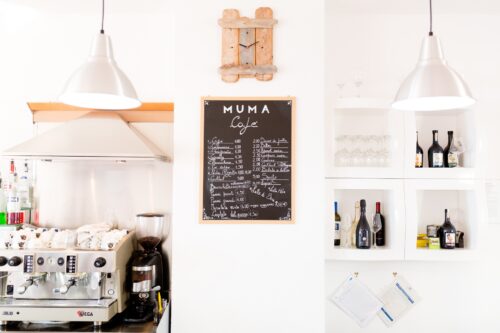
Most customers walk into your cafe with the same goal: they want something delicious that matches their taste preferences—and it’s your job to help them find that. A few ways to help customers figure out what they want are:
Give guests a lay of the land. A quick overview of your menu can help customers simplify their options. Once you know what category of drink they want—a traditional espresso-based beverage, a flavored drink, brewed coffee—you can offer more specific choices and descriptions.
Step away from your own preferences. It doesn’t matter that you think drinks with Ecuadoran cocoa are the bomb or that nothing equals the wild berry and floral notes of a natural Ethiopia Sidama. Your customer may hate chocolate or prefer a nutty coffee with cream and sugar. Even if they ask, “What’s your favorite?” I like to bring it back around with, “What do you usually enjoy?”
Practice objective descriptions. As a sensory guide, think about taking customers on a flavor journey. When they ask, “What does X taste like?” get away from responses like, “Oh, it’s really good!” or even worse, “It’s not my favorite.”
Instead, move towards more straightforward descriptors. “Our lavender honey latte is a mildly sweet drink featuring local wildflower honey with a light floral taste,” or “Our Ugandan pour over is an earthy coffee with molasses and cocoa notes roasted medium-dark.”
Train Your Senses
Part of giving customers drinks that match their expectations is having a good grasp of sensory descriptors. There are many ways baristas can become more confident in their sensory skills and more competent at guiding customers.
Set up coffee cuppings. Understanding SCA cupping protocols is practical knowledge for folks working on their Q Grader certification. Still, you can incorporate a simplified version of the protocols outlined by the SCA to help build your sensory lexicon.
Set up a table with various coffees and challenge yourself—and your fellow baristas—to correctly identify them, encouraging discussion along the way. This exercise can help you learn to recognize the qualities of each coffee and prepare to talk with customers.
Keep it interesting by varying the theme of the cuppings—try a cupping featuring light roasts, various washed coffees, or all African beans. Consider trading coffees with nearby shops or trusted colleagues. If your shop roasts, ask about ordering some samples to gain exposure to coffees not in your current lineup.
For advanced practice, select several single-origin coffees and blend them with one base coffee. For example, you could use Mexico, Ethiopia, and Guatemala coffees for the cupping, with a coffee from Sumatra as the base. Cuppers can then challenge themselves to identify the origin along with the common denominator.
Seek sensory opportunities. Smell and taste everything! You should be familiar with all the drinks on your menu and your beans prepared using various brew methods. Consider periodic pastry pairings, and try tasting chocolate, spices, and various fruits so you can focus on the differences between each—is the acidity of a peach the same as the acidity of an apple, for example. Le Nez du Café or other aroma kits are also great learning tools.
Triangulation cuppings—where three cups of coffee are set together, and two cups are the same and one different—are fun and easy to set up. This is more challenging than it seems, and the more similar the coffees, the tougher the exercise.
You can also delve into the science of tasting. For example, super taster test kits allow people to discover if they can detect various, often bitter, compounds. These kits, which are usually inexpensive, help you understand your taste sensitivities, often genetically determined, and also drive home the point that others may experience tastes differently.
Be a lifelong learner. An academic approach to coffee helps promote continual learning and professionalism. Our industry is constantly evolving, especially when it comes to sensory topics. Become familiar with the new Sensory Lexicon and Flavor Wheel. Read trade publications and books on coffee. You could even start a book club and discuss ideas with your coworkers! There are also helpful online resources, including apps and how-to videos.
Finally, keep the sensory realm accessible and encouraging for everyone. Things always taste better when people enjoy the experience!
Cover photo by Patrick Tomasso
Teresa Pilarz is an SCA specialized instructor and chief caffeinator at Espresso Elevado.
This article was originally published on October 26, 2016 and has been updated to meet Fresh Cup’s current editorial standards.



